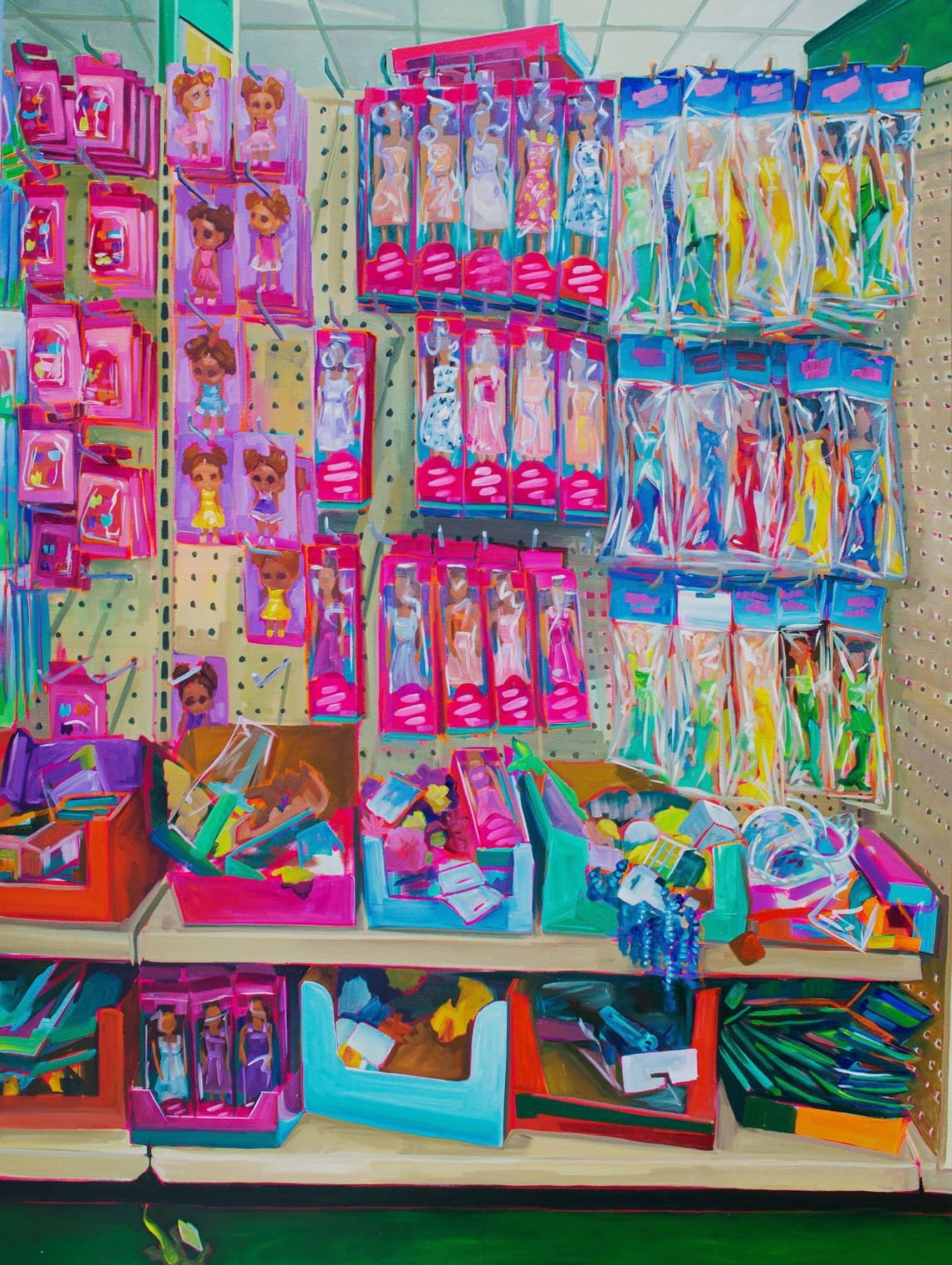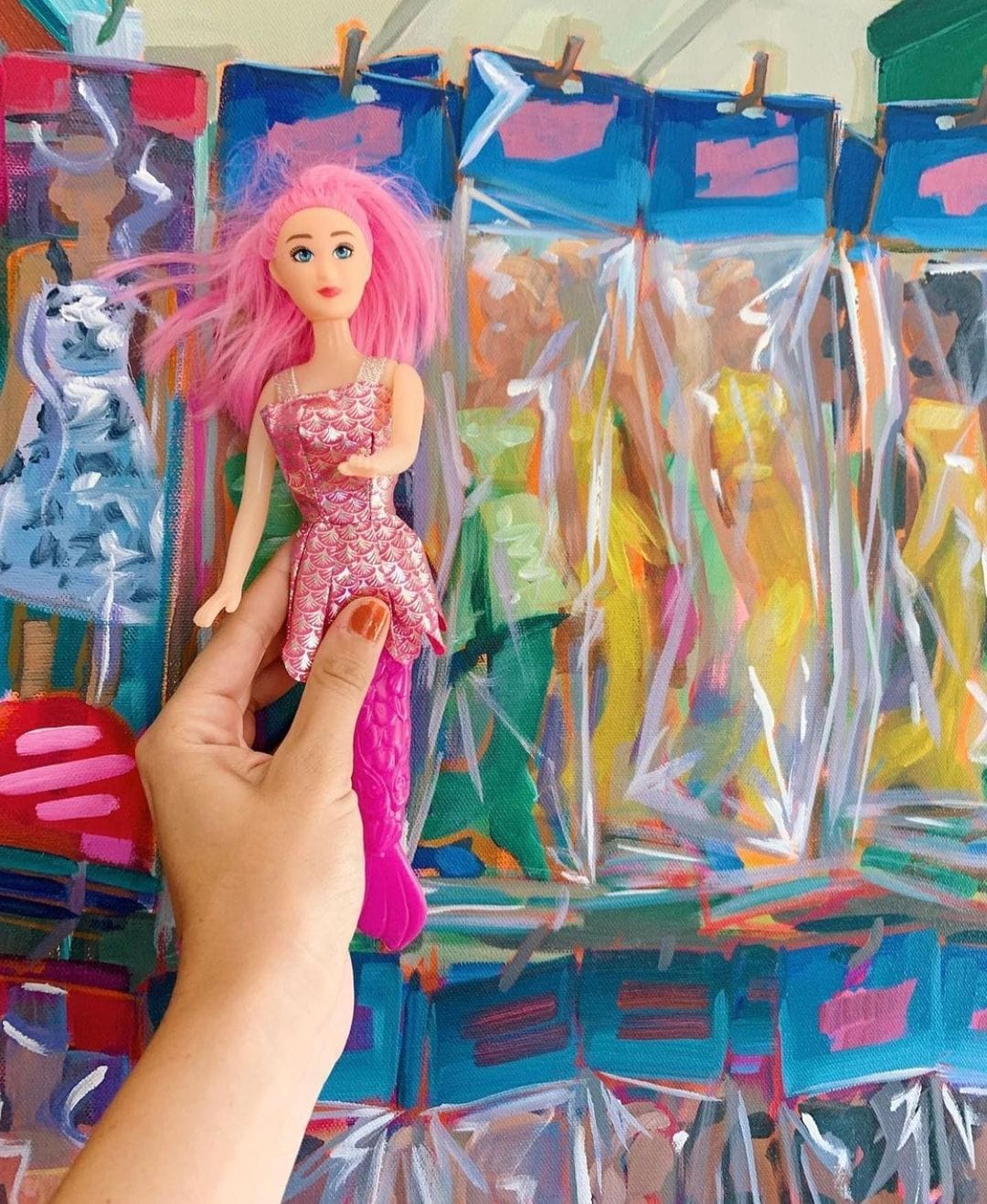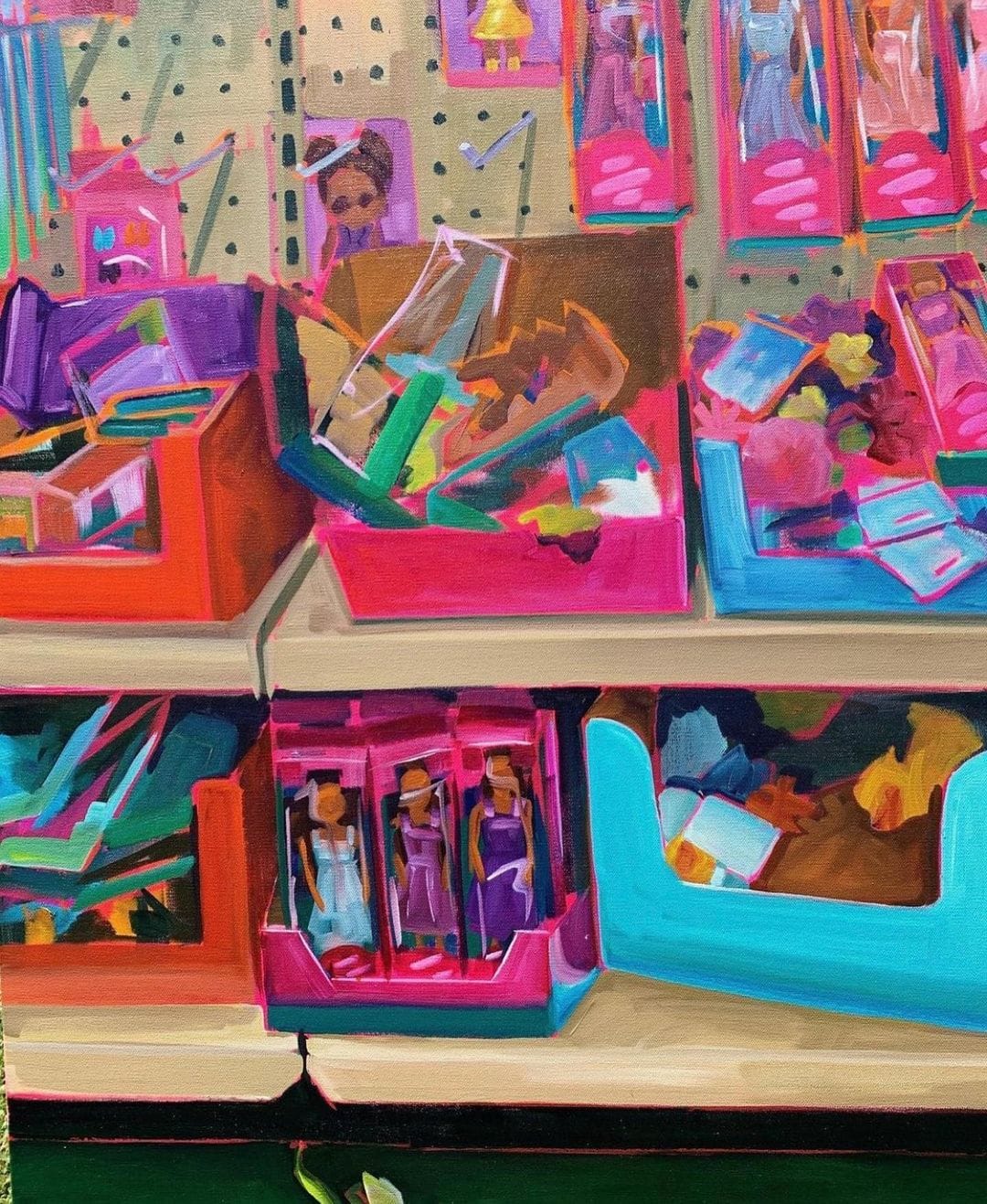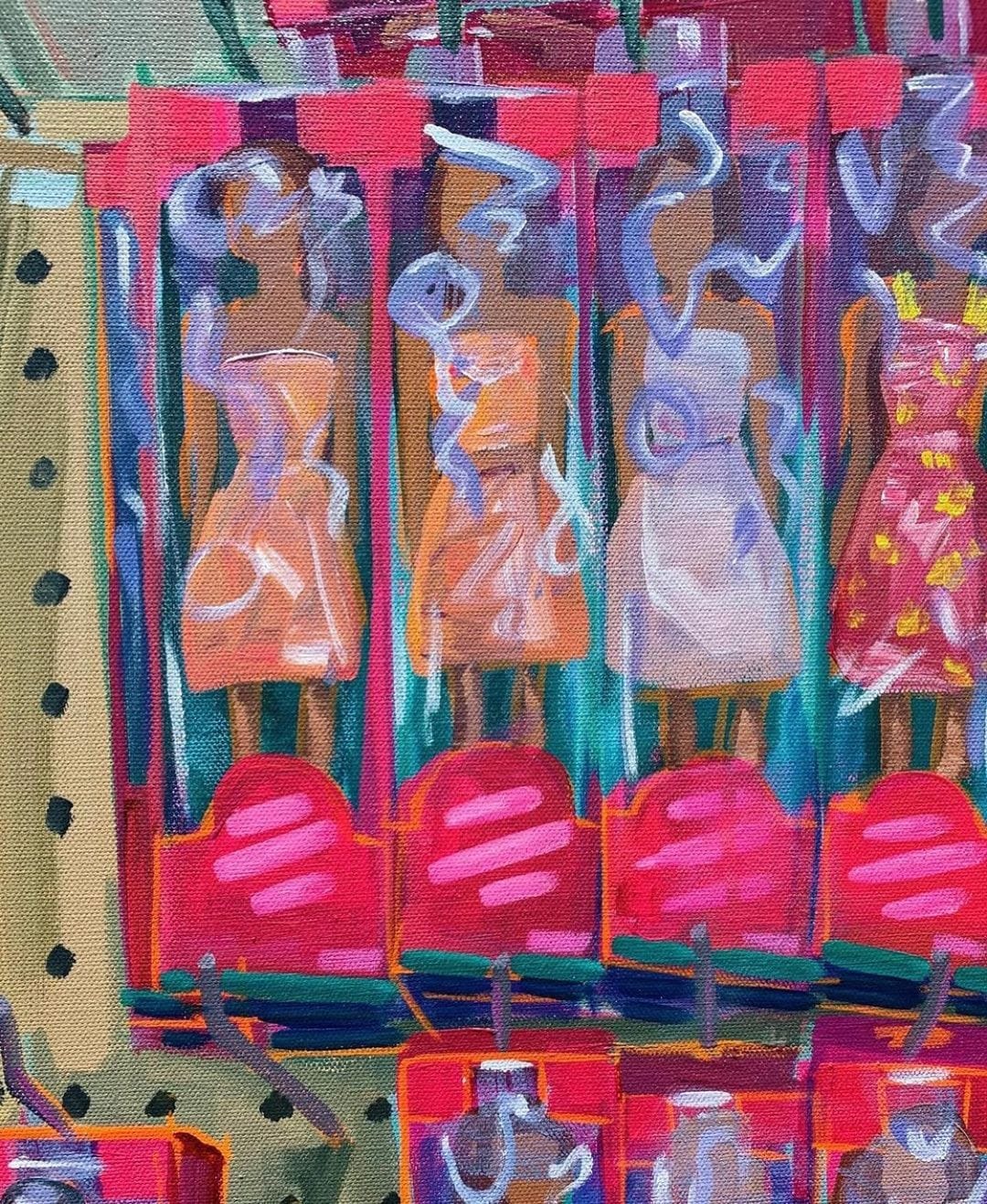American artist Sari Shryack is known for her brightly coloured contemporary realism paintings. She uses her colours much like the fauvists from the early 20th century. Fauvism was an art movement where artists deliberately disregarded how colours appeared in real life and chose to use them instead to depict different moods. For Shryack, her colours represent how she sees the world through rose-coloured glasses, embodying joy in mundane everyday activities.

However, when she wanted to create a painting to reflect on her childhood below the poverty line, she struggled to reconcile the heavy subject with her art style. This is because Shryack recognizes that conventional depictions of poverty were often done in muted and dull colours, such as browns, greys and black. Yet, Shryack decided to stay true to her style and experiences by painting the Dollar Store Barbie Aisle, where she bought most of her colourful childhood toys on a small budget. This is why Dollar Store Barbie Aisle by Sari Shryack is aligned with the United Nations Sustainable Development Goal of Reduced Inequalities and No Poverty.

For Shryack, being poor in the USA meant that everything you could afford was made of cheap and colourful plastic, much like the depicted bootlegged Barbies, whose name was “probably Betty or Brittney or something.” Shryack sees a connection between cheap plastic items and poverty. These poorly made goods are fleeting and unreliable, much like money is for the poor. Instead of purchasing high-quality toys that would last longer, they could only purchase low-quality dolls that would soon break, prompting them to purchase even more low-quality toys. This condition is not only limited to toys, but also to every other item, especially basic necessities such as groceries. “Stability is substituted for an empty calorie version of material access,” writes Shryack of the piece.

The United States Census Bureau found that in 2023, 36.8 million people lived in poverty in the US. At the same time, The Brookings Institution has reported that the cost of being poor is rising, meaning the reality that Shryack has embodied in her work has only gotten worse since her childhood. The Institution found that more than one-third of U.S. families did not garner sufficient resources to pay for basic necessities, while the cost of necessities has risen by 36 percent faster than other goods and services in the past 60 years.

Sari Shryack’s Dollar Store Barbie Aisle offers a vivid yet poignant reflection on growing up in poverty in the USA. Through her signature use of bright, non-traditional colours, Shryack challenges conventional portrayals of poverty, which are often muted and bleak. Instead, she captures the vibrancy of her childhood toys, bought on a limited budget from dollar stores, symbolizing the fleeting nature of cheap, plastic goods and the instability they represent. Her work is a commentary on the cyclical nature of poverty, where low-quality items mirror the financial challenges the poor face. Shryack’s piece sheds light on the enduring struggles of millions in the U.S., where the cost of poverty continues to rise. Through her art, she encourages viewers to rethink the intersection of material access, poverty and childhood experiences in America.
Find out more about Dollar Store Barbie Aisle and other pieces by Sari Shryack on her website www.sari.studio or Instagram @not_sorry_art.
